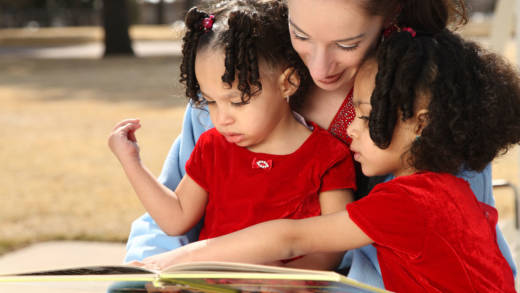A few years ago, my daughter requested that her nightly lullaby be replaced with a bedtime story.
I was happy to comply, and promptly invented stories full of imaginary creatures in elaborate plots intended to convey some important lesson about patience or hard work or being kind to others.
But my daughter was not pleased. She had very particular ideas about what her bedtime stories should be about. She wanted stories about a little girl planning a birthday party. A human girl. A human girl about her age. And what fascinated her were the mundane details: the theme for the party, the location, who was invited, and (most importantly) what they had for dessert.
It turns out my daughter is not alone. Her passion for birthday party stories, in particular, may be somewhat idiosyncratic, but children often prefer the factual over the fantastical. And a growing body of work suggests that when it comes to storybooks, they also learn better from stories that are realistic. For example, preschool-aged children are more likely to learn new facts about animals when the animals are portrayed realistically as opposed to anthropomorphically, and they're more likely to apply the solution to a problem presented in a storybook to a new scenario when the storybook involves real people (as opposed to fictional characters) and a realistic plot (as opposed to a space adventure).
A new study by Nicole Larson, Kang Lee, and Patricia Ganea, forthcoming in the journal Developmental Science, reveals that learning about good behavior is no exception. When children read a realistic storybook about humans who shared, they were more likely to do so themselves.



9(MDAxOTAwOTE4MDEyMTkxMDAzNjczZDljZA004))